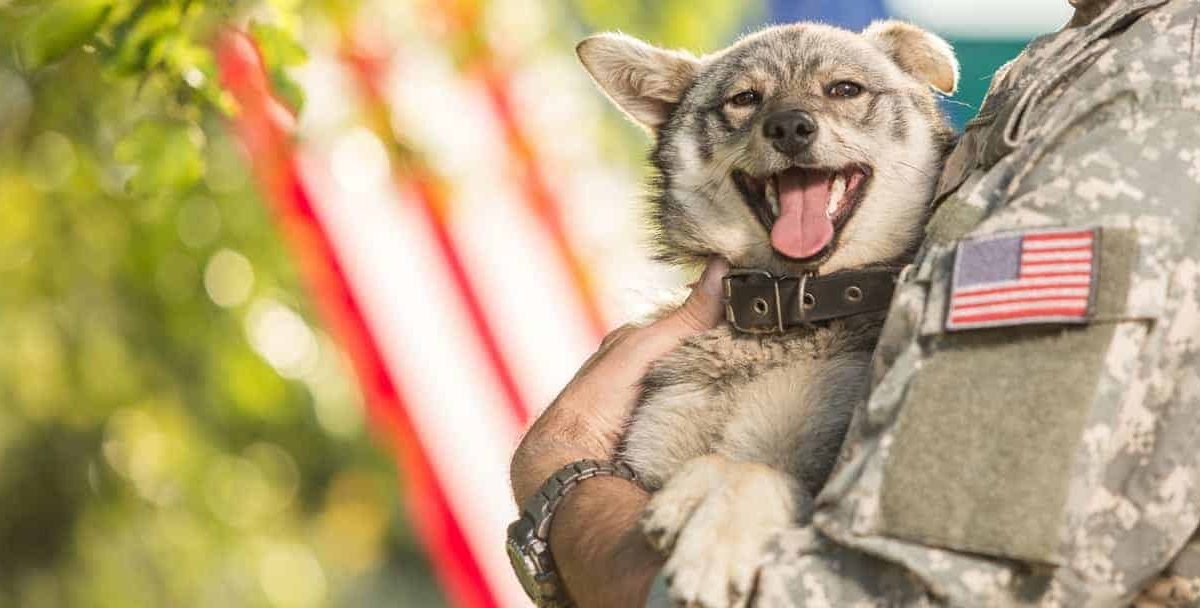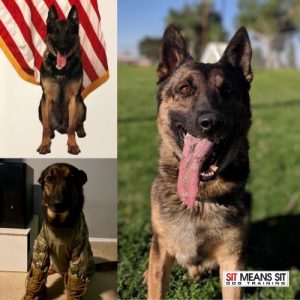
March 13th: K9 Veterans Day
 Every year on March 13th the nation celebrates the service of our veteran K9 officers. We sat down with Staff Sergeant Alexander Schmitt, Military Working Dog Handler and owner to veteran K9 Mark, for a glimpse into what it means when a former officer becomes a part of the family!
Every year on March 13th the nation celebrates the service of our veteran K9 officers. We sat down with Staff Sergeant Alexander Schmitt, Military Working Dog Handler and owner to veteran K9 Mark, for a glimpse into what it means when a former officer becomes a part of the family!
Tell us how you met Mark and came to add him to your family!
After finishing K9 Handlers course, I moved to Kirtland AFB, NM where Mark became the first dog I handled as a brand new handler. After getting caught up on training, Mark began to have a few anxiety issues which caused him to not be able to be left alone in his kennel without harming himself. So he was medically retired from the Department of Defense at the young age of 3 1/2. The typical working life span is 8+.
What was Mark’s service like prior to joining your family?
Prior to joining our family, Mark was a PEDD. which stands for Patrol Explosive Detector Dog. He was trained in apprehension, detection, as well as tracking individuals.
What was your prior experience in choosing and owning a dog?
Dogs have always been a big part of my life growing up, which lead me to my career path when the opportunity presented itself.
How would you describe the difference between having a dog like Mark and any other dog? Specific challenges or rewards?
The main difference is Mark’s drive to work and to please his handler. He’s always wanting to move and be doing something, which can be challenging when we have a long day and come home and all he wants to do is play or go for a run. It’s rewarding to see him still have the will to work. When he does something I’ve taught him well it’s nice to see the final product. As Mark’s only handler it’s nice seeing the difference from when I first began working with him.
What does an average day look like for you and Mark?
An average day when I’m not at work we will eat, then do about 20-30 minutes of just basic obedience and go for a walk. We still do some tracking just to satisfy his need to work, which is one of my favorite parts of my job. When Mark was active a normal day would start about the same. He’d eat, I’d perform health point checks every morning then we’d hit the road. We patrol on base like a normal K9 Police Officer. Most of our training is in detection as that’s what we perform when we are deployed.
What is Mark’s diet like?
Mark eats a raw diet as his anxiety issues caused him to lose most of his teeth. Hard kibble is just too much for him to handle.
Tell us about the process of adopting a former K9 officer?
The process was very lengthy. Once the vet recommends a dog for retirement, the recommendation will be sent to the commander of the Military Police who will ultimately decide if the dog should be retired, then sent back to Lackland which is the hub for all military K9 training. After they are recommended for retirement we will do a disposition video showing the dog isn’t aggressive towards people, the vet, or innocent bystanders. The ultimate goal of the video is to show that the dog is suitable for a normal life after retirement. Once that’s done it’s all paperwork. You have to fill out an application which is just a standard application you’d probably see at any adoption center. You have to go to the legal office and get a memorandum stating you won’t use the dog for any private business, or aggression work. After it’s all approved you do one last vet appointment then he’s yours to take him! The process took roughly 4-6 months in total, which varies case by case.
